Spike Generators and Cell Signaling in the Human Auditory Nerve: An Ultrastructural, Super-Resolution, and Gene Hybridization Study
- PMID: 33796009
- PMCID: PMC8008129
- DOI: 10.3389/fncel.2021.642211
Spike Generators and Cell Signaling in the Human Auditory Nerve: An Ultrastructural, Super-Resolution, and Gene Hybridization Study
Abstract
Background: The human auditory nerve contains 30,000 nerve fibers (NFs) that relay complex speech information to the brain with spectacular acuity. How speech is coded and influenced by various conditions is not known. It is also uncertain whether human nerve signaling involves exclusive proteins and gene manifestations compared with that of other species. Such information is difficult to determine due to the vulnerable, "esoteric," and encapsulated human ear surrounded by the hardest bone in the body. We collected human inner ear material for nanoscale visualization combining transmission electron microscopy (TEM), super-resolution structured illumination microscopy (SR-SIM), and RNA-scope analysis for the first time. Our aim was to gain information about the molecular instruments in human auditory nerve processing and deviations, and ways to perform electric modeling of prosthetic devices. Material and Methods: Human tissue was collected during trans-cochlear procedures to remove petro-clival meningioma after ethical permission. Cochlear neurons were processed for electron microscopy, confocal microscopy (CM), SR-SIM, and high-sensitive in situ hybridization for labeling single mRNA transcripts to detect ion channel and transporter proteins associated with nerve signal initiation and conductance. Results: Transport proteins and RNA transcripts were localized at the subcellular level. Hemi-nodal proteins were identified beneath the inner hair cells (IHCs). Voltage-gated ion channels (VGICs) were expressed in the spiral ganglion (SG) and axonal initial segments (AISs). Nodes of Ranvier (NR) expressed Nav1.6 proteins, and encoding genes critical for inter-cellular coupling were disclosed. Discussion: Our results suggest that initial spike generators are located beneath the IHCs in humans. The first NRs appear at different places. Additional spike generators and transcellular communication may boost, sharpen, and synchronize afferent signals by cell clusters at different frequency bands. These instruments may be essential for the filtering of complex sounds and may be challenged by various pathological conditions.
Keywords: auditory nerve; gene expression; human; spike generation; structured illumination microscopy.
Copyright © 2021 Liu, Luque, Li, Schrott-Fischer, Glueckert, Tylstedt, Rajan, Ladak, Agrawal and Rask-Andersen.
Conflict of interest statement
MED-EL Medical Electronics, R&D, GmbH, and Innsbruck, Austria provided salary support for one research group member (WL) in accordance with the contract agreement with Uppsala University, Sweden during 2018. The funder had no role in study design, data collection and analysis, decision to publish, or preparation of the manuscript. The remaining authors declare that the research was conducted in the absence of any commercial or financial relationships that could be construed as a potential conflict of interest.
Figures


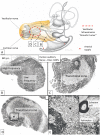
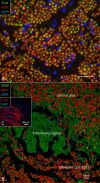
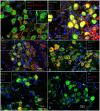
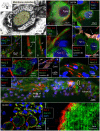
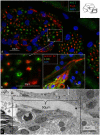



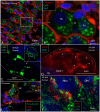
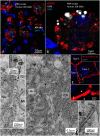



Similar articles
-
Na/K-ATPase Gene Expression in the Human Cochlea: A Study Using mRNA in situ Hybridization and Super-Resolution Structured Illumination Microscopy.Front Mol Neurosci. 2022 Mar 31;15:857216. doi: 10.3389/fnmol.2022.857216. eCollection 2022. Front Mol Neurosci. 2022. PMID: 35431803 Free PMC article.
-
Maturation of NaV and KV Channel Topographies in the Auditory Nerve Spike Initiator before and after Developmental Onset of Hearing Function.J Neurosci. 2016 Feb 17;36(7):2111-8. doi: 10.1523/JNEUROSCI.3437-15.2016. J Neurosci. 2016. PMID: 26888923 Free PMC article.
-
Expression of Na/K-ATPase subunits in the human cochlea: a confocal and super-resolution microscopy study with special reference to auditory nerve excitation and cochlear implantation.Ups J Med Sci. 2019 Aug;124(3):168-179. doi: 10.1080/03009734.2019.1653408. Epub 2019 Aug 28. Ups J Med Sci. 2019. PMID: 31460814 Free PMC article.
-
Resolving the structure of inner ear ribbon synapses with STED microscopy.Synapse. 2015 May;69(5):242-55. doi: 10.1002/syn.21812. Epub 2015 Mar 11. Synapse. 2015. PMID: 25682928 Review.
-
The Cochlear Spiral Ganglion Neurons: The Auditory Portion of the VIII Nerve.Anat Rec (Hoboken). 2019 Mar;302(3):463-471. doi: 10.1002/ar.23815. Epub 2018 May 4. Anat Rec (Hoboken). 2019. PMID: 29659185 Review.
Cited by
-
GJB2 and GJB6 gene transcripts in the human cochlea: A study using RNAscope, confocal, and super-resolution structured illumination microscopy.Front Mol Neurosci. 2022 Sep 20;15:973646. doi: 10.3389/fnmol.2022.973646. eCollection 2022. Front Mol Neurosci. 2022. PMID: 36204137 Free PMC article.
-
Na/K-ATPase Gene Expression in the Human Cochlea: A Study Using mRNA in situ Hybridization and Super-Resolution Structured Illumination Microscopy.Front Mol Neurosci. 2022 Mar 31;15:857216. doi: 10.3389/fnmol.2022.857216. eCollection 2022. Front Mol Neurosci. 2022. PMID: 35431803 Free PMC article.
-
Microanatomy of the human tunnel of Corti structures and cochlear partition-tonotopic variations and transcellular signaling.J Anat. 2024 Aug;245(2):271-288. doi: 10.1111/joa.14045. Epub 2024 Apr 13. J Anat. 2024. PMID: 38613211 Free PMC article.
-
Conditional Tnfaip6-Knockout in Inner Ear Hair Cells Does not Alter Auditory Function.Neurosci Bull. 2025 Mar;41(3):421-433. doi: 10.1007/s12264-024-01326-8. Epub 2024 Dec 17. Neurosci Bull. 2025. PMID: 39688649
-
A combined genome-wide association and molecular study of age-related hearing loss in H. sapiens.BMC Med. 2021 Dec 1;19(1):302. doi: 10.1186/s12916-021-02169-0. BMC Med. 2021. PMID: 34847940 Free PMC article.
References
-
- Arnold W., Wang J. B., Linnenkohl S. (1980). [Anatomical observations in the spiral ganglion of human newborns (author's transl)]. Arch. Otorhinolaryngol. 228, 69–84. - PubMed
Grants and funding
LinkOut - more resources
Full Text Sources
Other Literature Sources
Research Materials

